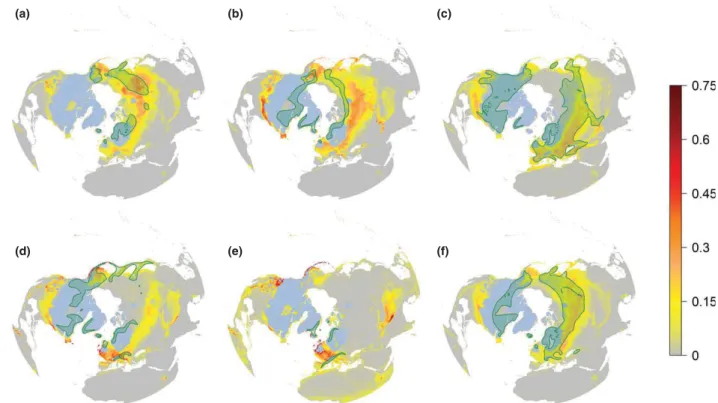Past climate‐driven range shifts and population genetic diversity in arctic plants
Texte intégral
Figure


Documents relatifs
Clade A is composed of JMTV strains mainly isolated from Rhipicephalus microplus (originating from China, Guinea, and Brazil, with the Brazilian strains forming a distinct subclade)
Clade A is composed of JMTV strains mainly isolated from Rhipicephalus microplus (originating from China, Guinea, and Brazil, with the Brazilian strains forming a distinct subclade)
The objective of Agroguayule project (co-financing ADEME, Call for projects GRAINE) is to select lines that combine good adaptation to the Mediterranean climate (dry and
Après ce premier vote, les étudiants sont invi- tés à interagir et argumenter leurs réponses vis-à-vis de leurs voisins, à l’aide de leurs notes et de leurs cours.. C’est
Genetic diversity and fitness in small populations of partially asexual, self-incompatible plants.. Miguel Navascués, Solenn Stoeckel,
In the present study, we examine the genetic structure of the endemic Nivelle myrtle (Myrtus nivellei Batt. et Trab.), the only species growing in the central Saharan mountains (in
As already mentioned above, the main result is obtained by: (i) proving that, in a low mutation - low migration regime (i.e., when γ → 0), subpopulations are monomorphic most of
Under differential fixation of duplicated loci, populations with lower poly- morphism levels, such as the inbred white koi (gene diversity of 0.13 using AFLP), can still be assessed